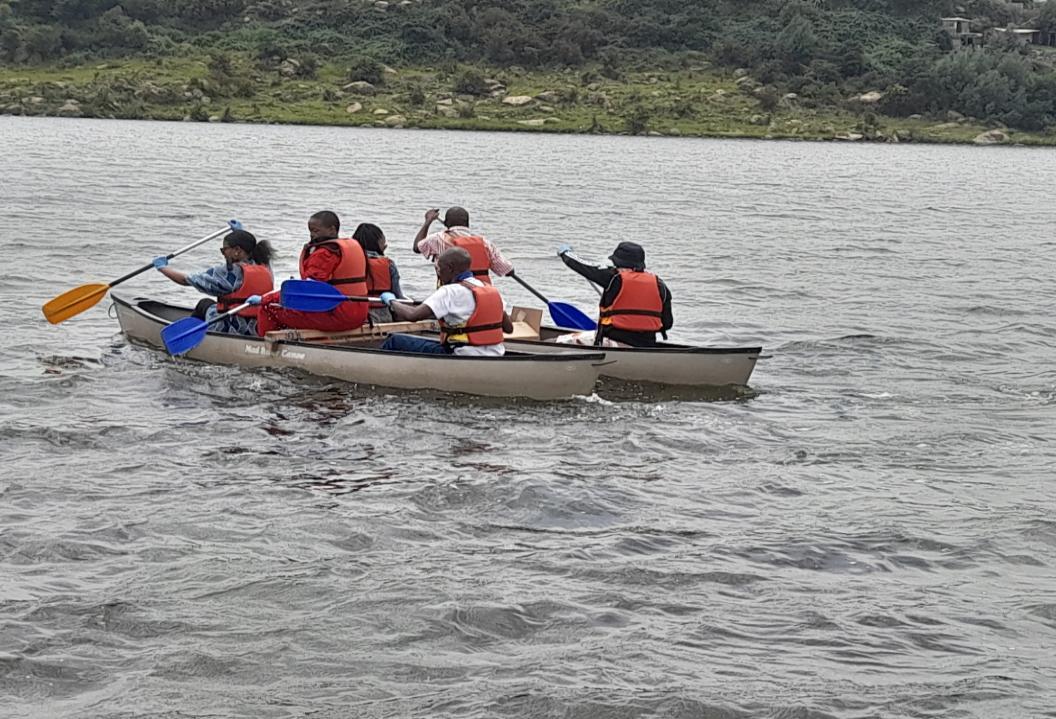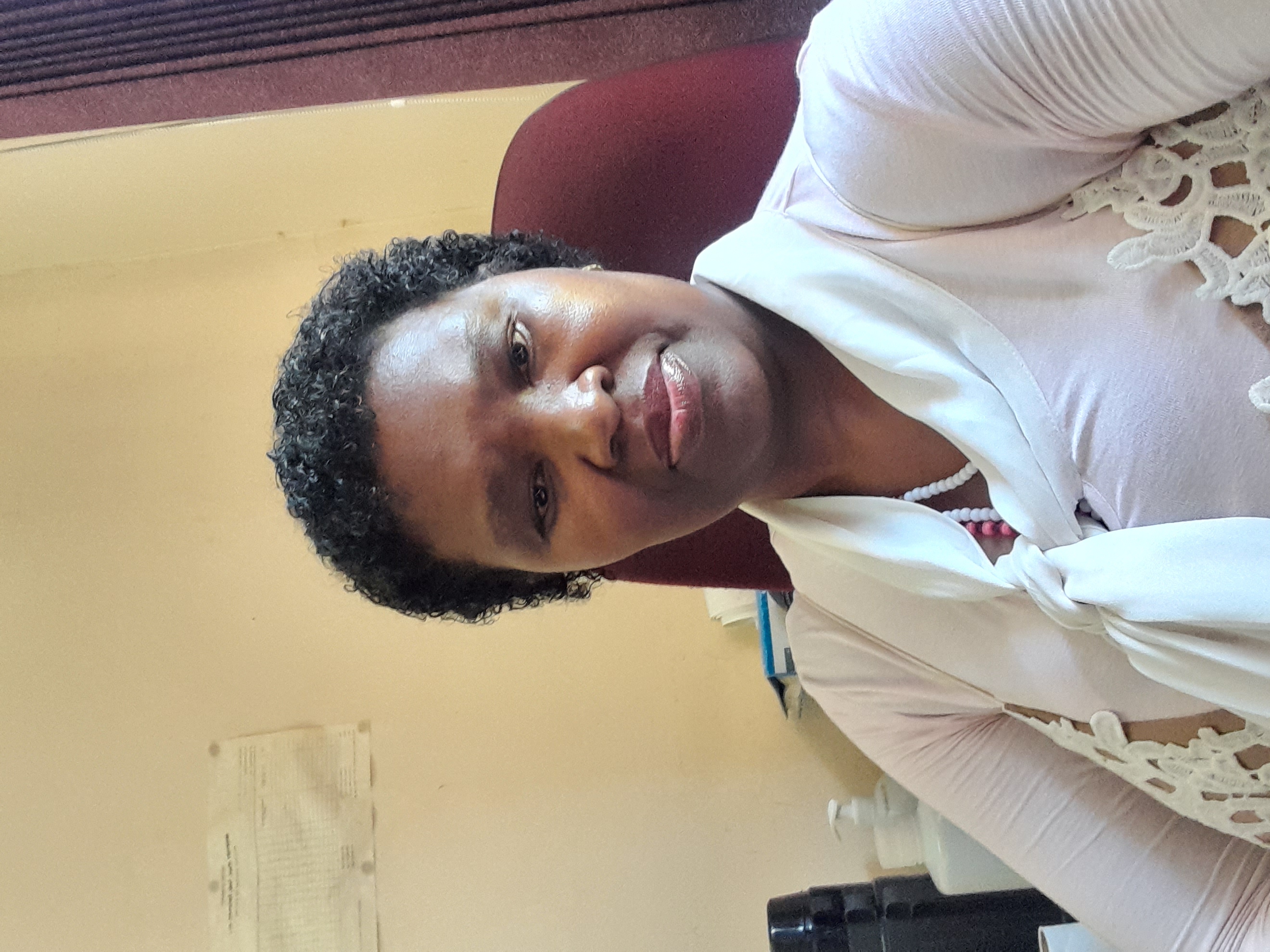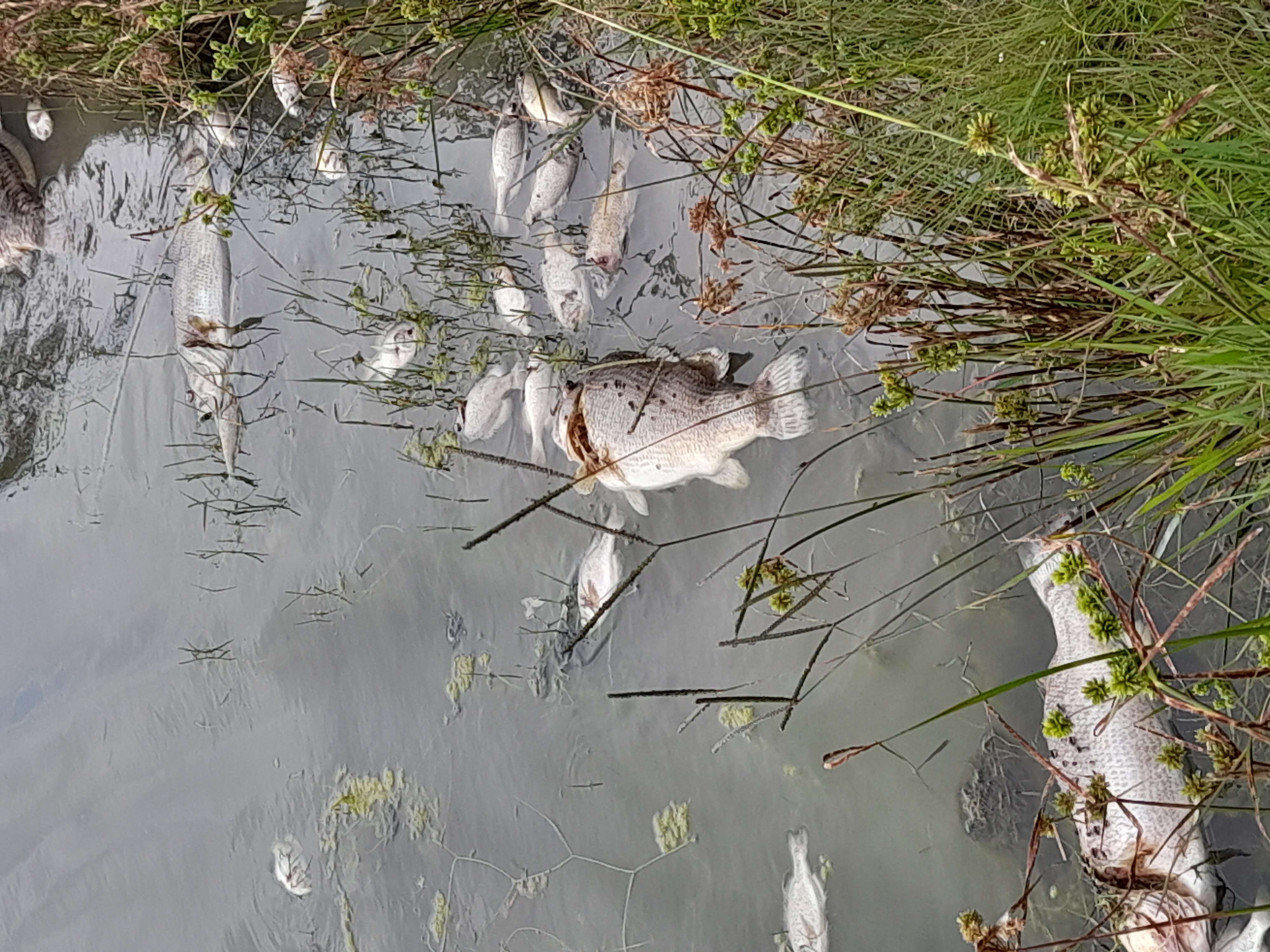Nthati Toae from Lesotho

Fish Kills and Freshwater Monitoring: Checking in with GEMS Alum Nthati Toae, Lesotho Department of Water Affairs
Our mission here at GEMS/Water CDC is to increase human capacity to monitor water quality, and ultimately to advocate for and improve the quality of water around the world. To that end, we are delighted to check in with a GEMS/Water alum, Nthati Toae from Lesotho. Having earned an MSc in Freshwater Quality Monitoring, Ms. Toae works for the Lesotho Department of Water Affairs.

Nthati Toae, Lesotho Department of Water Affairs
In the Maqalika Reservoir, in the mountainous African kingdom of Lesotho, many fish have died. The victims are common carp, and the dead are exclusively large and medium in size; the fingerlings and other small fish have survived. The dead fish line the reservoir’s banks, their eyes protruding and their mouths open, silently screaming that something has gone terribly wrong. Fish kills are common indicators of sudden, dramatic changes in water quality. They may indicate the presence of toxins, a dramatic shift in the water’s oxygen level or temperature, or some other lethal development; naturally, then, they are a key focal point for any water quality monitoring programme. Investigating and understanding this fish particular kill and its implications for human and ecological health was the responsibility of Nthati Toae, a hydrobiologist working for Lesotho’s Department of Water Affairs and a UCC alum, via the GEMS/Water CDC.
Ms. Toae got her start with a degree in science, majoring in chemistry and physical geography. But, while working for Lesotho’s Department of Mines and helping manage her country’s mineral resources, she was despatched to the Department of Water Affairs. There, she says, she ‘fell in love with water,’ and in particular with water quality. Working in the laboratory and analysing water quality samples, she realized that ‘life itself is dependent on water,’ and that ‘water use depends on the quality’. ‘We can have an abundance of water,’ she explains, ‘but if the quality is not good, it’s as good as having no water. It’s available but not usable’. This, in a nutshell, is the situation that the world faces with respect to water. For centuries, human relationships to water focused on managing water’s quantity: bringing abundant water to points of scarcity (irrigation), removing water from points of over-abundance (drainage), or ensuring stable flows of water despite the fluctuations inherent in nature (as in damming and channelizing rivers). But, in recent decades, it has become clear that the quality of water is just as important as its quantity.

Dead carp along the edge of Maqalika Reservoir
Human efforts to monitor the quality of water date back several centuries, but only since the 1970s has there existed a global effort to monitor water quality in a systematic way, via the United Nations Environmental Programme’s GEMS/Water, the Global Environmental Monitoring System for Water (there are also monitoring programmes for air, oceans, biodiversity, climate, pollution, and risk). GEMS/Water is a three-part organization, with a Global Programme Coordination Unit based in Nairobi, Kenya; a data centre in Koblenz, Germany; and the Capacity Development Centre, based at University College Cork in Ireland. GEMS/Water CDC’s mission is to increase human capacity to monitor water by offering training programmes. Nthati Toae is an example of some of the highest-level instruction the CDC offers, having earned her Master of Science in Freshwater Quality Monitoring via the CDC’s online programme.
With her expertise in freshwater quality monitoring, Ms. Toae conducted a painstaking investigation of the fish kill in the reservoir. Physical-chemical parameters are monitored, but as she points out, ‘they provide only a snapshot of water quality at a moment in time’. Arriving after the fish had died, there was no guarantee that the causes of the animals’ deaths would still be present and detectable. Instead, she explains, she looked to the macroinvertebrates that live along the reservoir’s edges; these creatures ‘can tell a short history of what happened,’ providing insight into the water quality from the past month or more.
And it was here that she was able to work out what had caused the fish kill. Just two species were in abundance along the reservoir’s edge: insects of the family Corixidae—aquatic creatures found worldwide and commonly known in English as ‘water boatmen’ for the resemblance of their legs to oars—and snails of the family Physidae. Both species are highly tolerant of water with low dissolved oxygen levels because they can directly access atmospheric oxygen, unlike the carp. The fish, moreover, died with their eyes protruding and their mouths open, as if gasping for breath, clear indicators of suffocation. The collected evidence, then, pointed to the immediate culprit in the fish kill: a lack of dissolved oxygen.
In the bigger picture, though, the lack of dissolved oxygen in the reservoir’s waters has a wider range of causes. Ms. Toae explained that the water quality in this area of Lesotho has several problems. Sewer effluent from communities upstream has long been pumped into the water, increasing its overall level of nutrients and leading to excessive algae and plant growth and therefore a low baseline of dissolved oxygen. There are also high levels of suspended solids and turbidity, stemming from over-grazing on neighbouring land and, as Ms. Toae found in her Master’s thesis, sand-mining from riverbeds. These elements together primed the waters of the reservoir for a critical event. This occurred when a particularly hot patch of weather coincided with the carp’s spawning season. The hot weather raised the water’s temperature and further reduced the dissolved oxygen in the water. When the carp gathered at the shallow waters at the reservoir’s edges at night, they fought for oxygen in waters so depleted that the conditions exceeded even their well-known robustness. Ultimately, the fish suffocated.
Despite this incident and systemic problems of water quality in Lesotho, Ms. Toae remains optimistic. It is true that, in Lesotho as virtually everywhere else, there are many, many competing demands placed upon water. The sand-mining is unlikely to stop as it is necessary for the country’s economic development, but Ms. Toae believes the water quality situation is improving. ‘With improved expertise’—like hers!—that can dig into problems to identify the real causes, ‘the authorities will have a better understanding of the damage that is done to the water, which is the heart of life’. Ms. Toae, then, is a perfect example of the kind of capacity the GEMS/Water CDC has been developing for the past fifty years: armed with scientific expertise and guided by a passion for life, people like Nthati Toae stand ready to safeguard, advocate for, and ultimately improve water quality around the world.
UNEP GEMS/Water Capacity Development Centre
UNEP GEMS/Ionad Forbartha Acmhainneachta Uisce
Contact us
Environmental Research Institute, Ellen Hutchins Building, University College Cork
